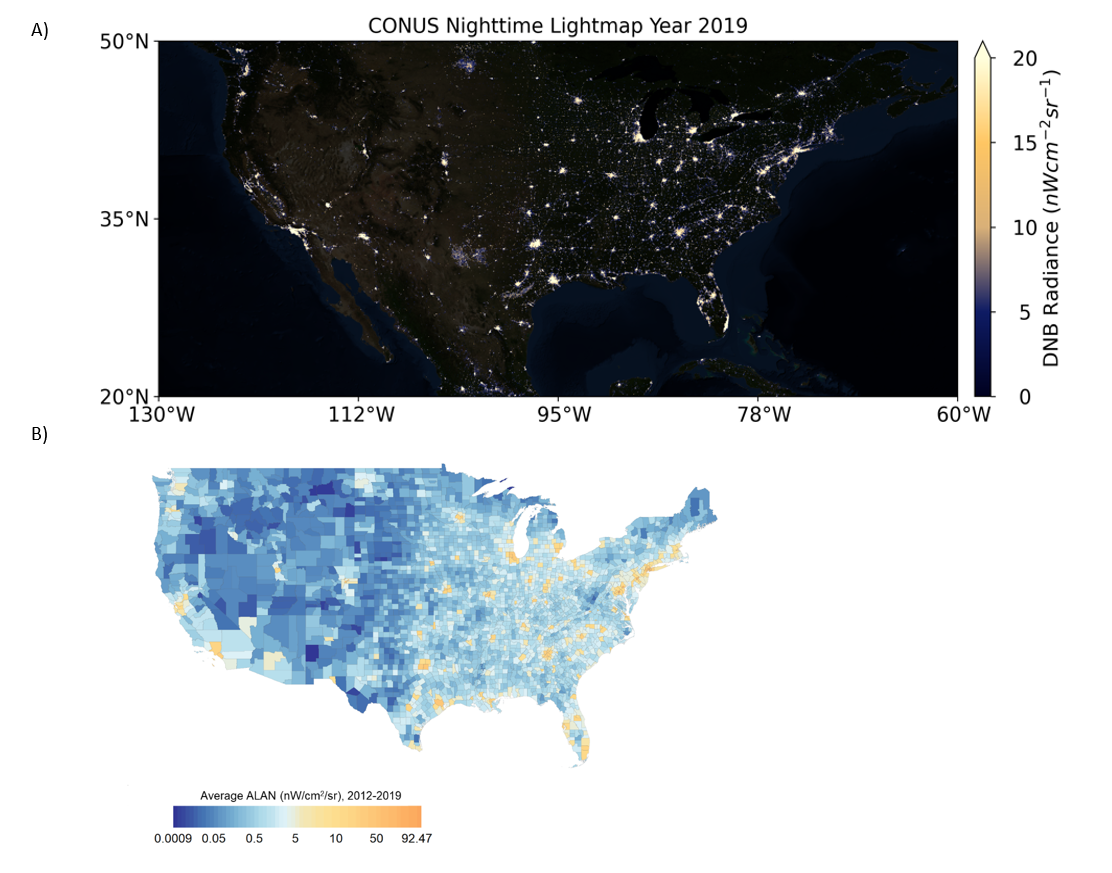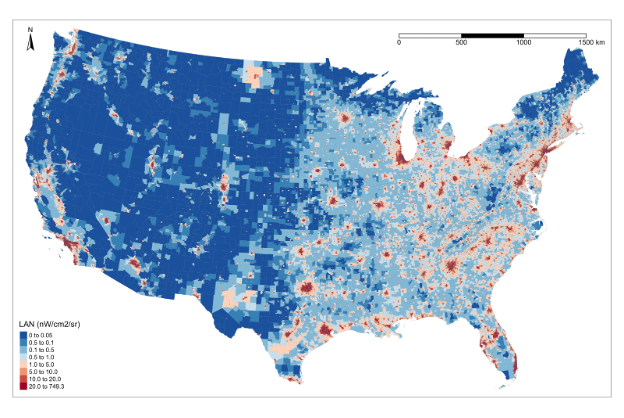Environmental Health & Surveillance
This area examines the environmental factors and their relationship to health, emphasizing social vulnerability, wastewater surveillance, and light pollution. We also investigate the interplay between artificial night lighting and social vulnerability, within an environmental justice context. The studies illuminate hidden health risks in under-served population, track geographical and temporal variations in environmental exposures, and shed light on disparities in health-related vulnerabilities. Our analytical work contributes to devising equitable strategies and interventions that address environmental health disparities.
We utilized wastewater surveillance to monitor infectious agents, including the Mpox virus, especially challenging due to its low community prevalence. In our study, we identified the Mpox virus in wastewater from a US-Mexico border city during February and March 2023 using real-time PCR assays. We noticed a rise in viral concentration weeks before any reported Mpox cases. Sequencing and epidemiological analysis further indicated unreported infections. Our findings underscore wastewater surveillance's importance for early disease detection in low-prevalence areas, highlighting the need for increased vigilance in controlling disease spread. (Check our publication: Wastewater surveillance suggests unreported Mpox cases in a low-prevalence area. )
We used a mixed-effect multiple linear regression to determine changes in ALAN for each county between 2012 and 2019.
Because the distribution of county-level ALAN was highly skewed to the right, log transformation was applied to improve
normality for both outcome variables. The model included year and state as fixed effects, as well as county-level random
effects for both the intercept and the slope for the year variable.
(Check our publication:
County-Level Artificial Light at Night (ALAN) in the Contiguous U.S. (2012-2019): Spatial Variations, Temporal Trends and Environmental Justice Analyses. )
We analyzed the relationship between Artificial Light at Night (ALAN) and social disadvantage using NASA's Black Marble
satellite data and the CDC's Social Vulnerability Index across over 70,000 US census tracts. Our findings revealed that the
most socially vulnerable communities experienced ALAN levels 2.46 times higher than the least vulnerable, with minority and
language status being significant predictors. This suggests that ALAN is not only an environmental justice concern but also
carries potential health implications.
(Check our publication:
Artificial Light at Night and Social Vulnerability: An Environmental Justice Analysis in the U.S. 2012-2019. )


